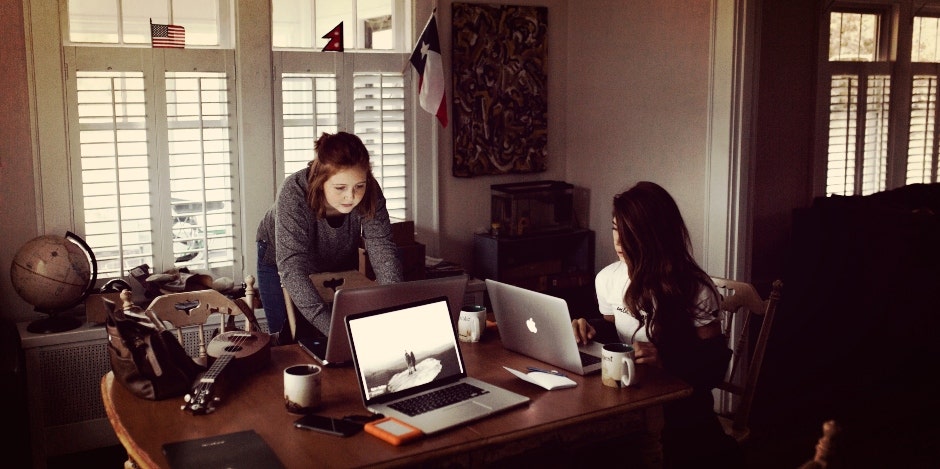How To Declutter & Organize Piled-Up Paperwork To Make Filing Taxes Easy This Year
Get control of all those piles of papers so that filing taxes is simple.
 Andrew Neel/unsplash
Andrew Neel/unsplash Do you want to feel more energized?
You may not realize it, but organization may be your answer. And the best way to start is by controlling the paper clutter in your room.
Have you ever noticed the effect that clutter has on you?
Clutter has the super-power of removing energy from people. It multiplies like bunnies when it’s left alone. Before you know it, the clutter’s everywhere.
Give yourself more energy and put energy back into your home by taking steps to control the clutter around you.
In fact, you may discover different kinds of clutter around your home.
But since it's now tax season, controlling paper clutter would benefit you greatly.
Here are 4 things you need to remember to declutter and organize your paperwork in time to file taxes.
1. Have everything in one place.
Just the thought of finding the papers necessary for filing taxes overwhelms some people. Talk about zapping energy and strength.
What if you knew exactly where to put any and all papers related to taxes as soon as they made their way onto your computer screen or into your snail mailbox?
Awesome, right?
Every year in December, I create a manila folder (I use a red one) for my taxes. I label it for the next tax year ("Taxes 2020") and put it in the hanging file, labeled "Taxes."
Then, as I receive anything tax-related — letters acknowledging a donation, 1099s, interest statements, etc. — I put them in the red manila folder. If I get them digitally, I print them so I can put them in my taxes folder.
So, the one way I control the paper clutter in my home by having a place to put everything tax-related. I have everything I need in this folder when I’m ready to do my taxes. Simple.
2. Follow the O.H.I.O. rule.
Piles of paper, piles of files, little scraps of paper, and post-it notes written and left here and there rob people of energy — it takes energy to figure out what to do with all these piles, notes, and scraps.
You have to read each note and take the time to remember its significance. Then, you have to decide what to do next.
It could take you quite a bit of time if you need to find a document or a specific note you left yourself. That’s a time-waster and an energy thief.
If this is happening to you, let’s turn it around and get that energy back.
Some people teach the O.H.I.O. rule for paper — O.H.I.O. stands for "Only Handle It Once."
I’ve never been able to follow this rule. Sometimes, I simply don’t have time to take care of the next step involved in handling each paper. So, I put it down and it ends up in a pile. Does this sound familiar?
In all honesty, I’m a bit of a paper-piler. I’ve learned through trial and error how to control the paper clutter in my home by reducing my tendency to pile paper.
And an added benefit is that you can also apply this same strategy to your digital documents.
3. Assign an action.
When you open an envelope and look at the contents, think about your next step. Write the verb associated with your next step at the top of the paper.
For instance: "Pay," "File," "Read," "Call," or "Email."
Then, there are the things you just don’t know about. I write "Pending" on these.
You can also have a folder labeled "Ask" if you have a partner you want to check with before acting.
By the way, these are just some of the more common action folder names. You may come up with different action words with which to label your action folders.
Have a desktop hanging file holder or a stadium file folder sorter nearby to hold these action files and folders.
These are temporary holding spots for these papers.
There are lots of different types of either desktop file holders or stadium file sorters. You can find them at stores like The Container Store, Target, Walmart, and Office Depot.
4. Create a strategy
Once you have sorted your papers into action files, plan to revisit these action files regularly. After all, they are meant to be a temporary holding spot to control the paper clutter in your home.
My suggestion is to open each folder once a week, look through it, and schedule actions to take in your calendar. You do not want to merely collect papers in these folders.
Work this strategy by continually revisiting these folders and emptying them.
You can apply this strategy digitally by creating action folders for your email. Once you have taken the action (paid the bill, replied to an email, scheduled an appointment), delete the email.
This reduces email clutter. Email or digital clutter is a topic for another day.
Home organization is not always fun, and neither is learning how to declutter.
But when you control the paper clutter in your home, you are in charge. The clutter is not robbing you of energy. Just the opposite.
Feel more energized by knowing that you have your papers under control.
You know the actions to take to stay on top of your to-do list. Piles of paper and piles of files will not accumulate because you have places to put them.
Diane N. Quintana is a Certified Professional Organizer®, Certified Professional Organizer in Chronic Disorganization®, master trainer, and owner of DNQ Solutions, LLC based in Atlanta, Georgia. She specializes in residential and home-office organizing and in working with people affected by ADD, hoarding, and chronic disorganization. Contact her for help in creating action files and folders to control the paper clutter in your home that works for you.

